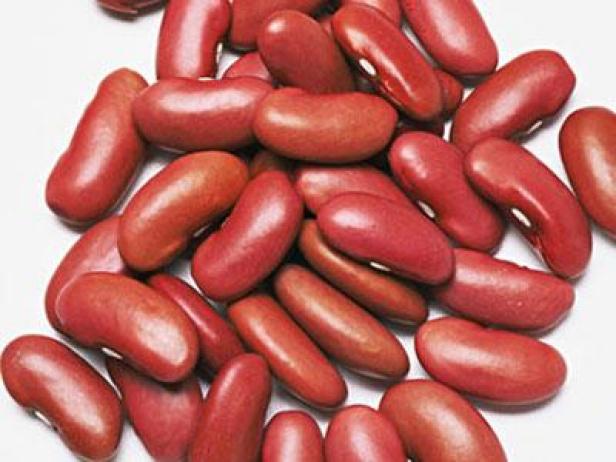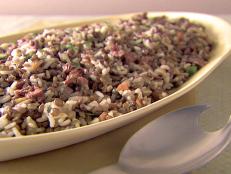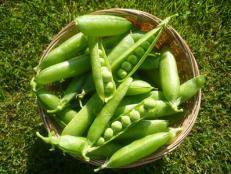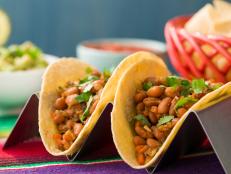Legume to Love: Beans

Yes, black beans, chickpeas, kidney beans, pink and pinto beans are available on most store shelves or in many chili, soup or salad recipes. Think beyond the basics, though. Try experimenting with adzuki, navy, anasazi and Great Northern beans. If you see an unfamiliar bean at your health food store, grab it and search online for prep ideas. You never know what little gem you'll find -- or what new nutrients you'll add to your diet.
Speaking of nutrients, these little guys are healthy powerhouses. Beans are legumes (along with peas and lentils) and an important complex carbohydrate, which your brain uses for energy. A half cup of canned or home-cooked black beans has about 114 calories and 7.5 grams of protein. There isn't any noteworthy calorie difference between canned and cooked dry beans, so you can use them interchangeably. Just beware of flavored, canned beans that have added fat from pork or other meats -- or any beans that are refried. Always rinse your canned beans before using them, too; that helps wash away extra sodium you don't want or need.
Now for the other goodies: beans an excellent source of fiber -- they have about 7.5 grams per 1/2 cup serving. We all know extra fiber in a meal helps you feel fuller faster and longer (keeping you from being hungry or overeating), and many people don't get enough fiber in their diets. Better still, fiber lowers colon cancer risks, helps lower cholesterol and makes for a healthy digestive system.
Because they're plant-based, beans have no cholesterol, saturated and trans fat -- making them a good idea for folks at risk for heart disease. If you're one of those people, try trading meat for a plant protein source such as beans at least once a week.
And, yes, the list goes on. Beans are also a good source of calcium, zinc and iron, which is especially important for vegetarians or people looking to skip red meat and find their iron elsewhere. There's also folate, an important B-vitamin many of us are missing. Plus, mommies-to-be, take note: folate helps fetal spine development in pregnant women (that's what the doc is checking for in those early sonograms!). Studies show that folate also helps reduce the amino acid homocysteine, which, when elevated, is shown to increase chances for heart disease.
No, we're not done yet. A study published in the Journal of Agricultural and Food Chemistry found that 12 common beans had high antioxidant levels in their skin. Not only do antioxidants help prevent cancer, they are linked to preventing aging (who doesn't like that?). Black beans especially have high anthocyanin levels -- 10 times higher than an orange, in fact, and comparable to grapes, cranberries and apples.
We prefer our beans dried, but we understand the convenience of canned, which come pre-soaked and pre-cooked. Dried beans are cheaper, though, and you're getting more for your money. In my market, a one-pound bag of dried black beans (which makes 6 cups cooked) costs $1.50, while a 29-ounce can (3.5 cups cooked) costs $1.49.
Money-savings aside, don't let the extra effort scare you away. All you need to do is pre-soak beans in cold water for several hours (or overnight, if you prefer) to reduce the “gassy” effect. Then you just cook the beans on the stovetop for about an hour and a half (time varies depending on the bean -- check your packaging). This Slow-Cooked Beans recipe gives you step-by-step instructions.
My mother, a vegan chef and fellow nutritionist, suggests adding sea kelp to help the beans cook faster and make them more digestible (that is, kill the whole "musical fruit" issue). Cooking with ginger, fennel and garlic might also help combat beans' gassiness.
When using canned beans, it's a good idea to boil the beans and liquid for about 10 minutes. Rinsing and draining the beans can help reduce their gassiness more. Still worried, there's always Beano, an over-the-counter pill that can help reduce indigestion.
Beans have made their way into most every dish. Usually you'll find them in chili, bean soup, baked beans or simple rice and beans. Branch out and make a white bean chili or toss warm beans on a green salad.
Using beans to replace meat is an easy way to add flavor and texture while reducing a dish's cholesterol and saturated fat. You can trade beans for some of the ground beef in lasagnas, burgers or even a meat sauce. Experiment and reduce the ground meat by 1/4 or 1/3 and replace it with mashed black beans.
Black beans are a definite classic. I like adding them to salsa or a fresh cold bean salad with mango and corn. What about trying a breakfast burrito with eggs, cheese and black bean salsa rolled up in a flour tortilla? My fave!
Other ideas? Toss beans in your pasta or mix mashed beans into your beef burger. It's almost picnic season, too. Bring along a white bean and garlic dip.
Storage Tip: Keep dried beans in an airtight container for up to 1 year. Make sure they're stored in a cool, dry place. Cooked beans will keep in your refrigerator for a maximum of 7 days.
-
Recipes to try:




























